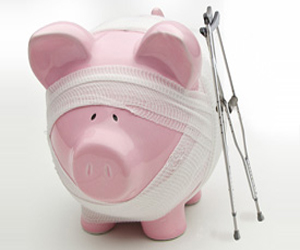Send this article to a friend:
April
26
2022

Send this article to a friend: April |
 |
The Quick And Dirty On Inflation
Despite the fact that inflation has been running hot for over a year, the mainstream pundits, government officials and central bankers can’t seem to nail down what’s going on. First, they said printing trillions wouldn’t cause inflation. Then they called inflation transitory. They said it was the pandemic. They pointed their fingers at supply chains and “excess demand.” Now they’re blaming Putin. The problem is the mainstream won’t come to terms with the real underlying cause of rising prices. Mises Institute President Jeff Deist gives a quick and dirty breakdown of the inflation problem. All of a sudden everyone is an expert on inflation. Your brother-in-law, your local paper, and even dilettantes at dubious outlets like the Washington Post or The Atlantic feel compelled to explain our current predicament. With the admitted rate of consumer inflation running somewhere around 8 percent, and the real rate much higher, even central bankers can’t hide the reality from us. So the commentariat has to explain to us why this is happening and make sure we blame the mysterious workings of capitalism for our troubles. In other words, economics is back. Covid was a nice diversion, and Ukraine took up all the media’s oxygen for a few months. But now we must deal with the economic devastation caused both by lockdowns and two years of crazed fiscal and monetary policy. Every day Americans, stubborn as they are, care more about rising gas and food prices than the political class would like. So they trot out Nancy Pelosi to explain how government spending actually reduces inflation and push pseudoeconomic ideas like modern monetary theory to explain why more federal spending is always the cure. But what is really happening?
All of this happened before any of us had heard of covid. But the obvious question last fall, screaming to be asked, was this: How on earth, after more than a decade of aggressive asset purchases by the Fed (swelling the central bank’s balance sheet from less than $1 trillion in 2007 to more than $4 trillion by 2019), did commercial banks still experience a liquidity crunch? What the hell was the point of all that money? But covid washed away any question about repo and silenced any critics of the Fed’s largesse. Covid had to be defeated, by God, and monetary policy would lead the way. So the Fed went into hyperdrive, buying trillions in additional assets to send its balance sheet soaring to nearly $9 trillion today—adding nearly 20 percent of all dollars ever created to the M2 money supply measure in 2020 alone. That same year, with lockdowns firmly in place and a crisis mindset whipped up by both parties, Congress managed to spend almost twice what the Treasury collected in taxes ($3.4 trillion in revenue versus $6.5 trillion in outlays). How is such an arrangement possible? Given historically low rates of return on Treasury debt—well below real inflation—and given the almost unbelievable and irreversible profligacy of the spendthrift US government, why would any sentient being continue to loan money to Uncle Sam? Why would anyone help Congress continue its debt-financed orgy? Why lend America money? The answer is complex, ranging from the dollar’s status as the world’s reserve currency to pension and sovereign wealth funds around the globe that hold US Treasurys by charter and even the relative strength of America’s military forces. The question is thus as much geopolitical as economic. But in short, the world knows the Fed will always be there as a ready backstop, to buy US debt when appetites for such debt waver. Propping up congressional deficit spending, juicing equity markets, and constantly recapitalizing commercial banks are the Fed’s true mandates. How does inflation end? Only with pain in the form of a necessary corrective recession or depression. Congress must slash spending, the Fed must stop buying assets and stop tampering with interest rates, and existing US debt must be allowed to mature and roll off the Fed’s balance sheet. We should force the US federal government to sell assets, especially land, to pay off Treasury obligations and fund future Social Security and Medicare entitlements. And if necessary, the federal government should be forced to default or apply a haircut to Treasury investors, who, after all, took a risk like any investor. If all of this sounds politically impossible, you understand the deep unseriousness of today’s politics.
|
Send this article to a friend:
 |
 |
 |